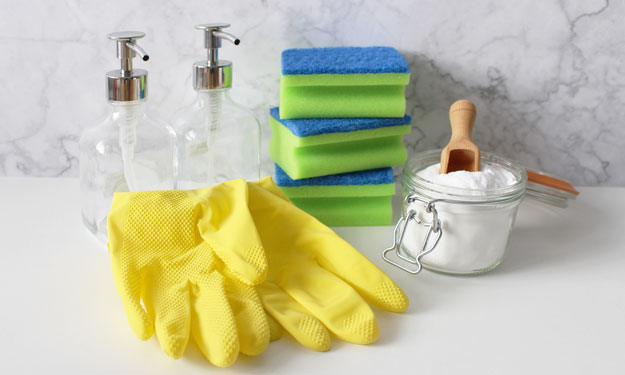How to Clean, Disinfect and Sanitize Surfaces in the Home

Cleaning, Disinfecting and Sanitizing Surfaces in the Home.
Cleaning, Disinfecting and Sanitizing Surfaces
In every home there are dozens of surfaces that need to be cleaned, disinfected and sanitized. Some of these surfaces are cleaned as they are used; such as kitchen counters when meal prepping. Many surfaces are only cleaned weekly or bi-weekly with regular household cleanings.
But when you or another family member gets sick, it’s good to know how to keep surfaces clean, disinfected, and germ free to help keep others healthy and from getting sick as well.
Cleaning, sanitizing and disinfecting surfaces and objects that are highly touched throughout the day will reduce the number of germs present.
Cleaning in this way doesn’t have to be done just when someone is sick, it can be a good idea to incorporate it into a daily routine and teach young children the importance of a clean home, just like we teach them the importance of washing hands often.
What to Clean, Disinfect and Sanitize?
When someone is sick, your home should be cleaned and disinfected many times a day. After cleaning and disinfecting, your cleaning cloths should be rinsed and tossed in the washer, ready for the next load of clothes. If using disposable cleaning products, toss them in the garbage.
As we said, there are many surfaces touched in a day, some of those surfaces to clean are obvious but there are some maybe not so much.
- Kitchen and bathroom counters
- Kitchen and bathroom cabinets and drawer pulls
- Pantry shelves
- Refrigerator (outside displays also)
- Kitchen and bathroom sink and faucets
- Kitchen and dining room table and chairs
- Cooking surfaces
- Light switches
- Toilet, tub and shower
- TV remote controllers (can be wrapped in plastic wrap and changed as needed)
- Phones, tablets, computers and other electronic devices
- Doorknobs
- Watches and jewelry
- Desk
- This will be time consuming but cleaning and sanitizing kids toys and stuffed animals should be done as well
- Change to a more disposable toothbrush that can be tossed when a person is no longer sick
- Clean and disinfect garbage cans
- Washing clothes should be done more frequently as well. Towels, bedding, pajamas, etc.
Another place you should not forget to clean and sanitize are your hands! Wash them frequently during the day.
How to Properly Wash Your Hands
Cleaning Surfaces
When cleaning around the house, wear disposable or washable gloves. If you are wearing washable gloves, wash them before taking them off just as you would when washing your hands then wash your hands after taking the gloves off.
- Use your regular cleaning supplies as they do a great job of removing germs from surfaces.
- Soap and water can also clean surfaces if you’ve run out of your regular stash of supplies.
- Using rubbing alcohol or isopropyl alcohol that is at least a 70 percent alcohol can also be used undiluted if necessary.
- If necessary, a little bleach and water can be used. Mix 1/3 cup bleach to 1 gallon of water. This is harsher so test the surface you’re cleaning and be careful not to splash on clothes or fabric items as it will stain them.
- Hydrogen peroxide is not as harsh as bleach but it could still discolor fabrics but it can be used undiluted to clean surfaces if needed. Hydrogen peroxide pretty much turns to water when exposed to light which is why it’s in a dark container.
Clean surfaces good, put some elbow grease into it. Get the entire surface wiped down and wet. Surfaces should remain visibly wet for 4 minutes to remove germs. Let air dry if you can. Then use a disinfectant.
Do not use acidic products or harsh chemicals on natural stone surfaces, as they can cause permanent damage to the surface.
Washing Laundry
As always, check labels and wash as manufacturer suggests. Use warmest water temperature items can handle.
Don’t forget to clean laundry hampers, especially if someone has been sick.

